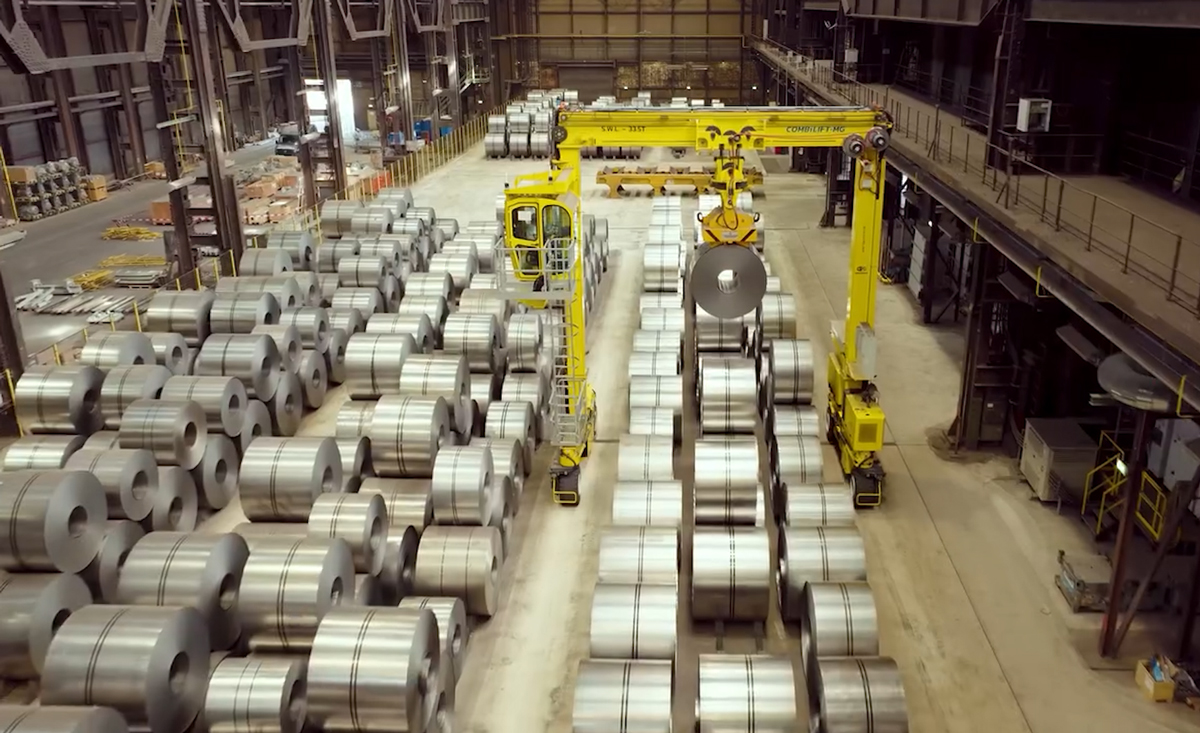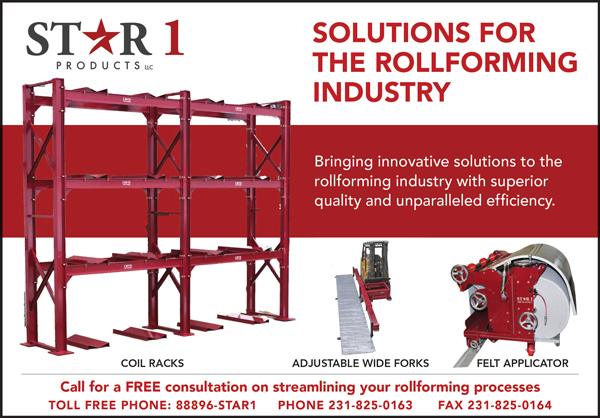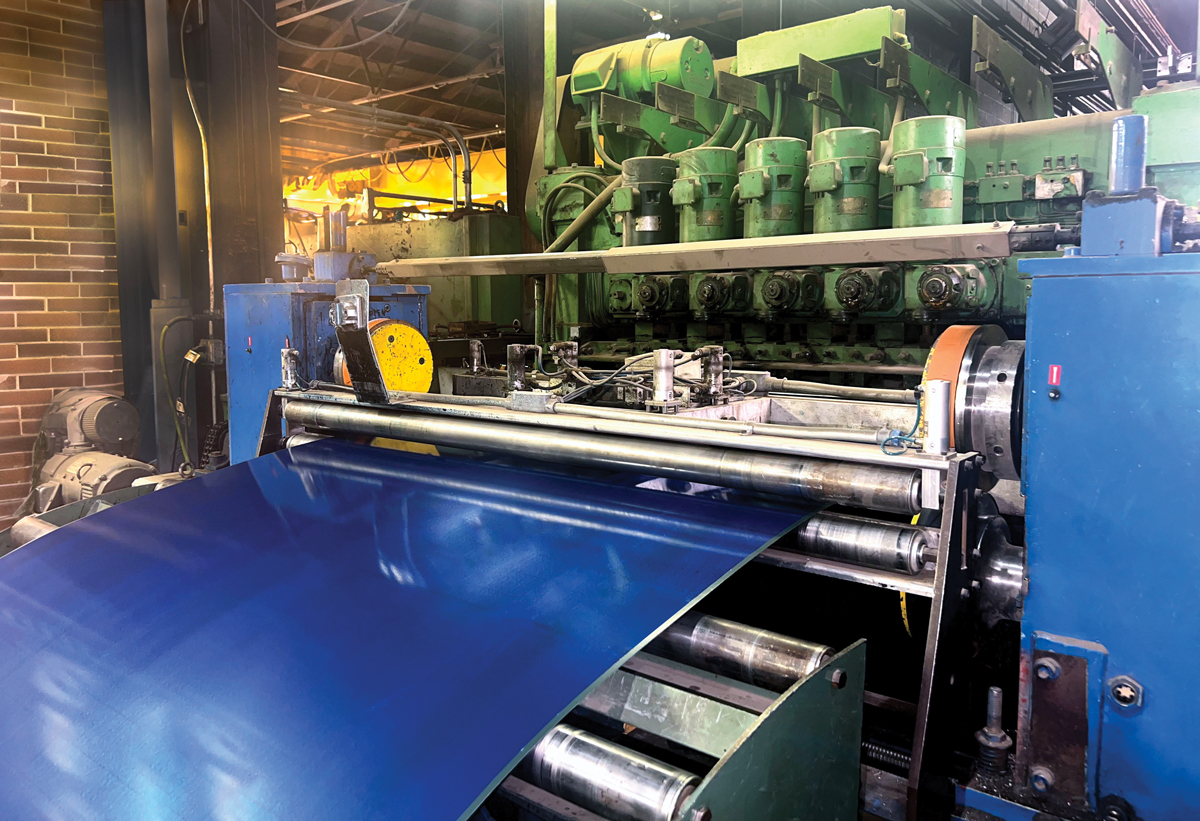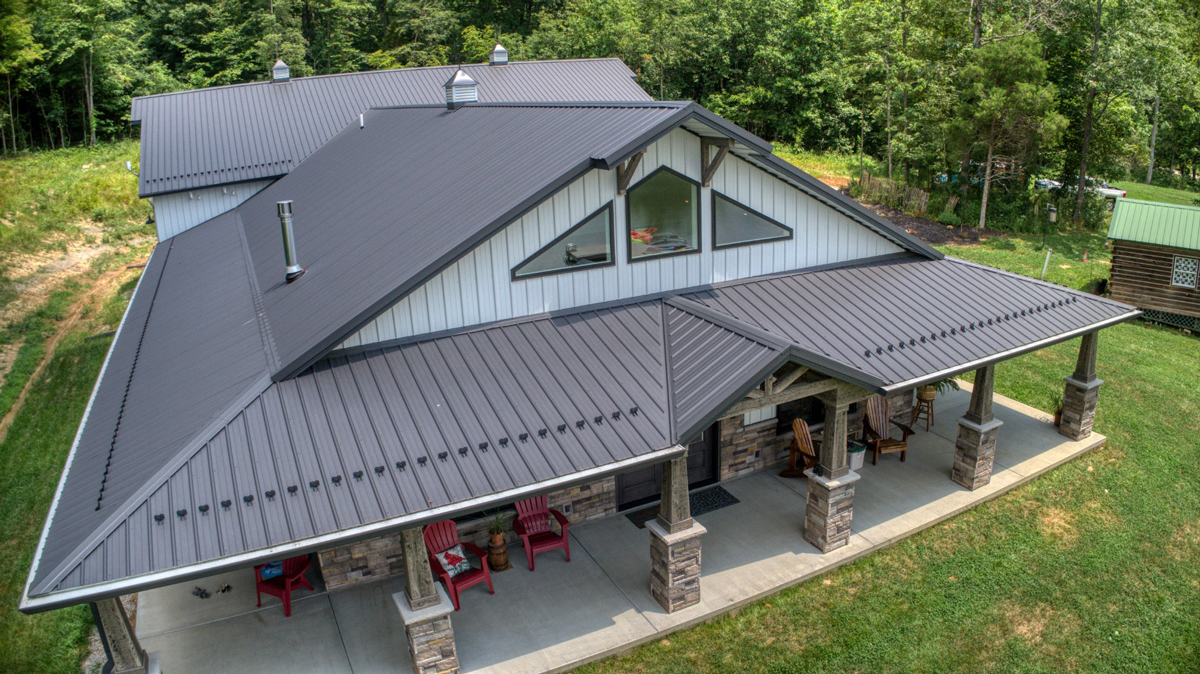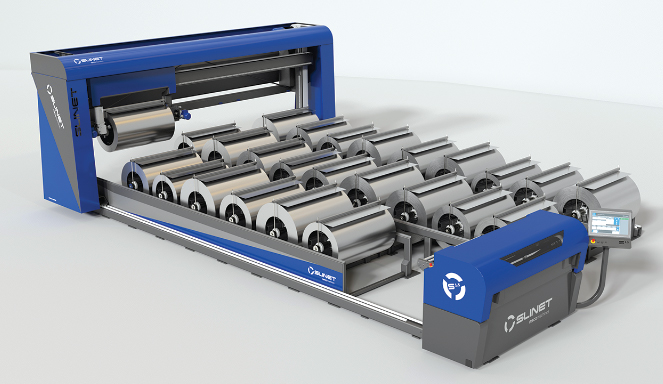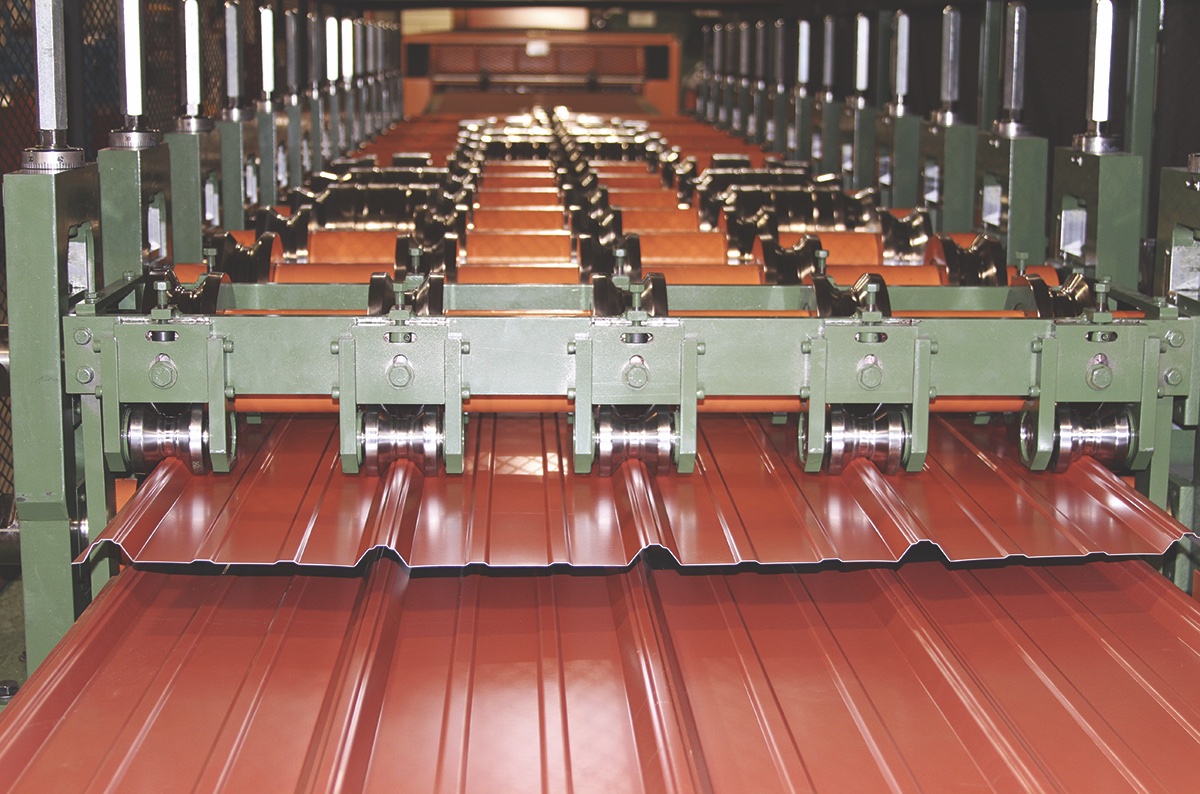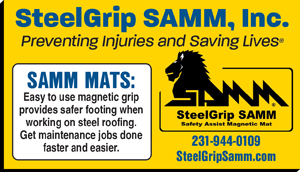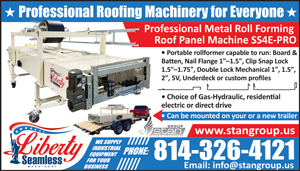Handling coil, while moving or storing, is a precise process in order to avoid damaging the product or causing injury to the handler. Utilizing the wrong equipment or using the proper equipment incorrectly may adversely impact the quality of the product and/or risk the safety of the individuals involved. Moving the coil properly, storing it efficiently, and utilizing the correct equipment safely is an important part of any construction metal-forming business.
Equipment
Nelson Miller of Star 1 Products says that coils come into the facilities eye to the sky, meaning the center of the coil is facing upward, or towards the sky. The metal coil is wound around a cardboard core and delivered on a pallet. You need a coil tipper to get the roll eye to the side in order to feed the roll former line. Star 1 Products builds coil pallets and racking used to store the coils eye to the side. Miller states that using a Star 1 Coil Handler is an efficient way to swap out coils on a roll-forming line, minimizing coil damage and cutting down on changeover time.
Martin McVicar, the CEO of Combilift, explains why Metroll added multidirectional forklifts to their fleet as a safer and more efficient solution for roll-forming shops than regular forklifts. “Metroll opted for the Combilift versatile three-in-one counterbalance, side-loader, and reach forklift truck as they can lift coils both eye to the side or sky, by either placing the forks through the center of the coil or by lifting them via pallets or skids. The coils then retracted between the forklift legs distributing 4 to 10 tons of weight evenly over the wheels for a greater load stability. In side-loader mode, the same truck easily carries their roll-formed cladding — up to 50 feet long — through confined areas or doorways while keeping the load low to the ground, improving operator visibility, increasing overall storage density and making their operations much safer.”
Storage Strategies: “Eye to the Sky” or “Eye to the Side”
“We store coils eye to the sky until they are used for roll forming,” Paul Zimmerman of Hixwood describes. Finished coils are stored this way to avoid damage to the painted surface and to maximize storage space, allowing for more tons per square foot of warehouse space.
However, Zimmerman continues to explain that WIP coils, instead, are stored eye to the side. When it is time to slide the coil into the decoiler, the coil is eye to the side so that the mandrel can slide into the eye and decoil, allowing the ability to slit the coil to the size that is needed for the job.

Photo courtesy of Combilift.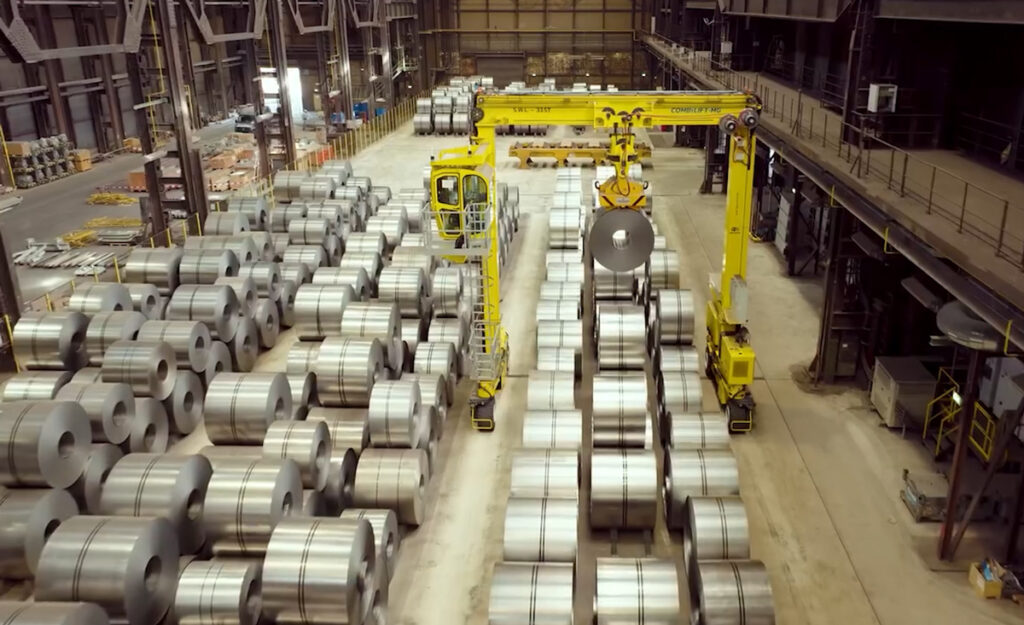
Handling a coil
fewer times minimizes risks.
Photo courtesy of Combilift.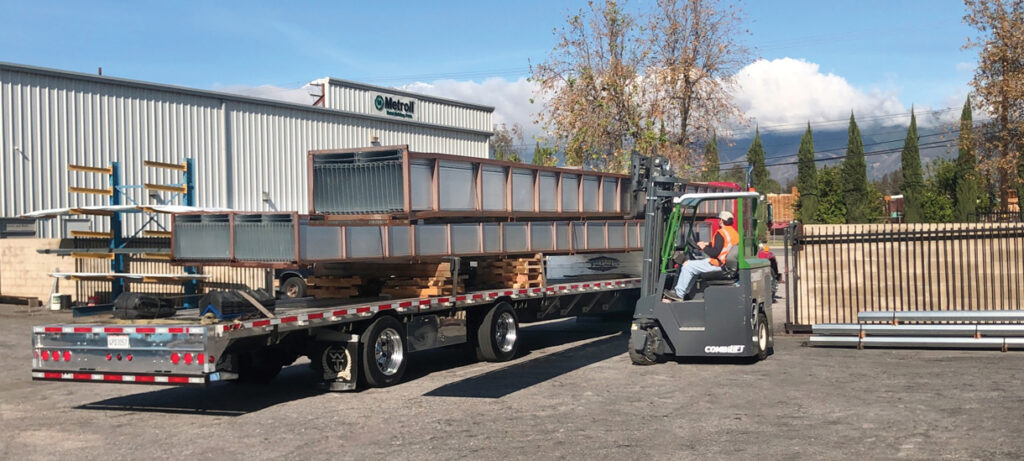
Photo courtesy of Combilift.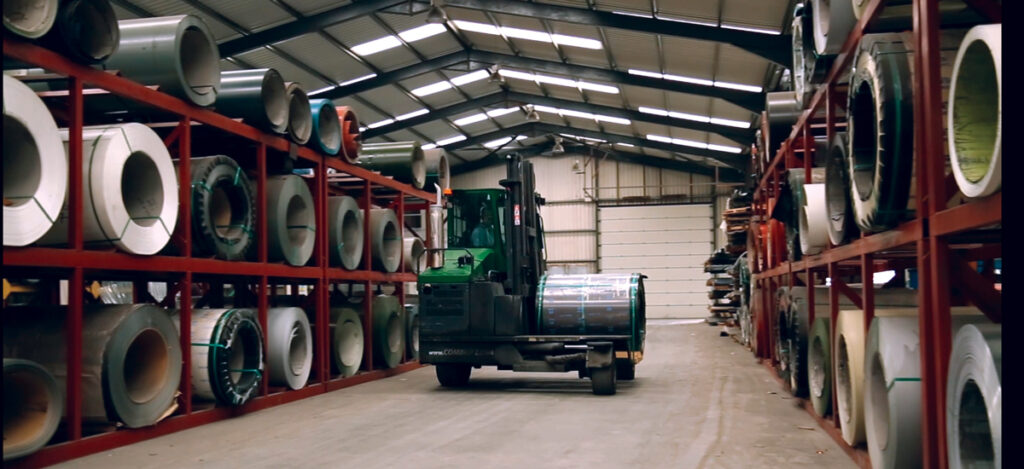
Photo courtesy of Combilift.
Automated Coil Handling
There are benefits to automated coil handling. There is likely less coil damage when the machine automatically knows where the coil is. The coil is less likely to hit the edge, as the machine comes to and picks up from the same place each time. There is less human error and potentially fewer employees and operators needed altogether.
Other potential benefits include increased speed and uptime; automated machines can work faster than a human operator. Reduced scrap due to more accurate cutting, higher throughput, lower costs, and improved packaging are additional advantages. With the benefits, however, are disadvantages such as the initial costs, lead times, machine problems, maintenance, and potential safety issues.
Common Hazards and How to Avoid Them
Due to their weight and size, handling metal coils can be very risky. McVicar explains that incorrect weight-to-lift ratio calculations can lead to accidents or equipment failures. This may also cause damage during transit, leading to costly downtime if damaged coils are used in machinery. Similarly, Miller suggests using a forklift or truck that is overrated for the weight of the coil, and never underrated, to ensure that the equipment can safely manage the weight. He points out that these coils reach up to 10,000 pounds and could be fatal if they fall on someone.
Zimmerman suggests that one of the most overlooked things about coil safety is that the company should work with their local fire inspector in case of a fire. The company should be upfront with the inspector on where, and how high the coils are stored. It is important to explain this and teach the operators to avoid this area during a fire, due to the fact that pallets would burn out in between the coil stacks. This would likely cause coils to fall through walls, causing harm to employees, firefighters, and/or equipment if in the area.
While acknowledging major hazards, such as fires, Miller reminds us that simple mistakes may severely impact the product, causing severe damage as well. When moving coil off of a rack to the decoiler, if the edge or side is nicked, it can damage a lot of footage of the coil. He explains how one nick or blemish can ruin the whole coil, depending on where the damage is. Quality control is of the utmost importance in order to protect the product quality and production efficiency. To combat this, McVicar explains that their focus is to minimize the number of times a coil is lifted or transported. Double-handling of coils increases the risk of damage and production loss if a damaged coil goes unnoticed. Additionally, Zimmerman strongly suggests that along with initial forklift training for new drivers, there needs to be ongoing refresher trainings to keep awareness of safe forklift practices.
Conclusion
In conclusion, it’s clear that handling and storing metal coils is no minor task, but it is crucial for any construction metal-forming business. The right techniques and equipment can make all the difference, not just in protecting the coils themselves but also in keeping everyone safe on the job.
Regardless of which storage strategy is used, the focus on safety and efficiency should always be front and center. And as we move into a more automated future, it’s exciting to think about the potential benefits, though it’s important to keep in mind the challenges that come with it.
Don’t forget, common hazards are lurking around every corner, so regular training and a strong safety culture are key. New employees are usually on guard and cautious, but familiarity often leads to complacency. Also, by prioritizing quality control and minimizing double-handling, you can avoid costly mistakes that could derail production.
At the end of the day, being proactive about how you handle coils can boost productivity and help maintain high standards. The best practice is to keep refining processes and ensuring that everyone goes home safe at the end of their shift. RF
Courtney Glover is a freelance writer and photographer based in Milwaukee, Wisconsin. When not contributing her talents to various publications, Courtney writes YA fiction under the pen name Courtney Christine.


